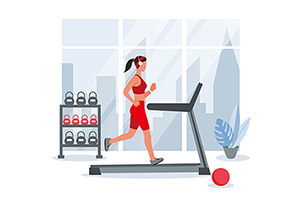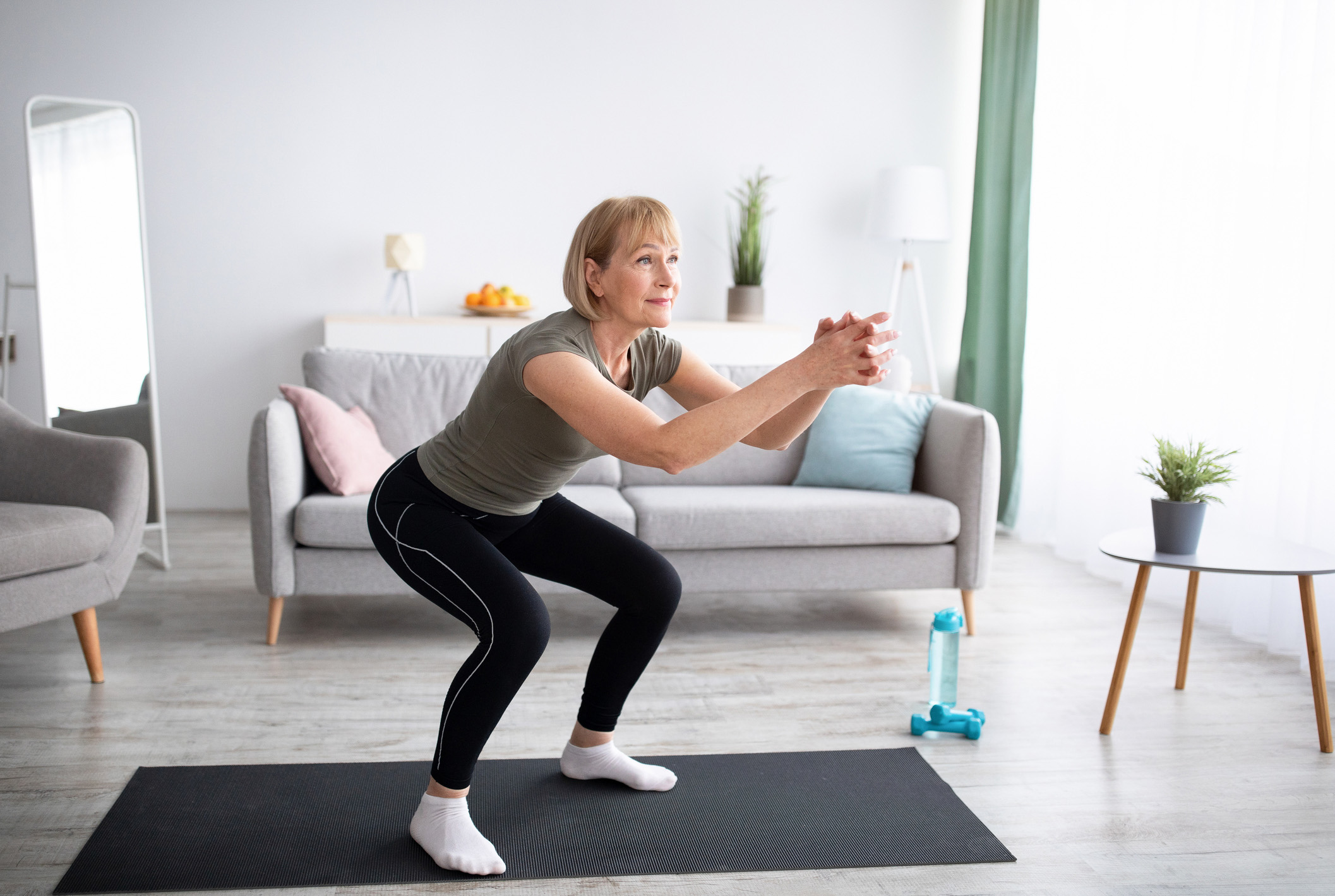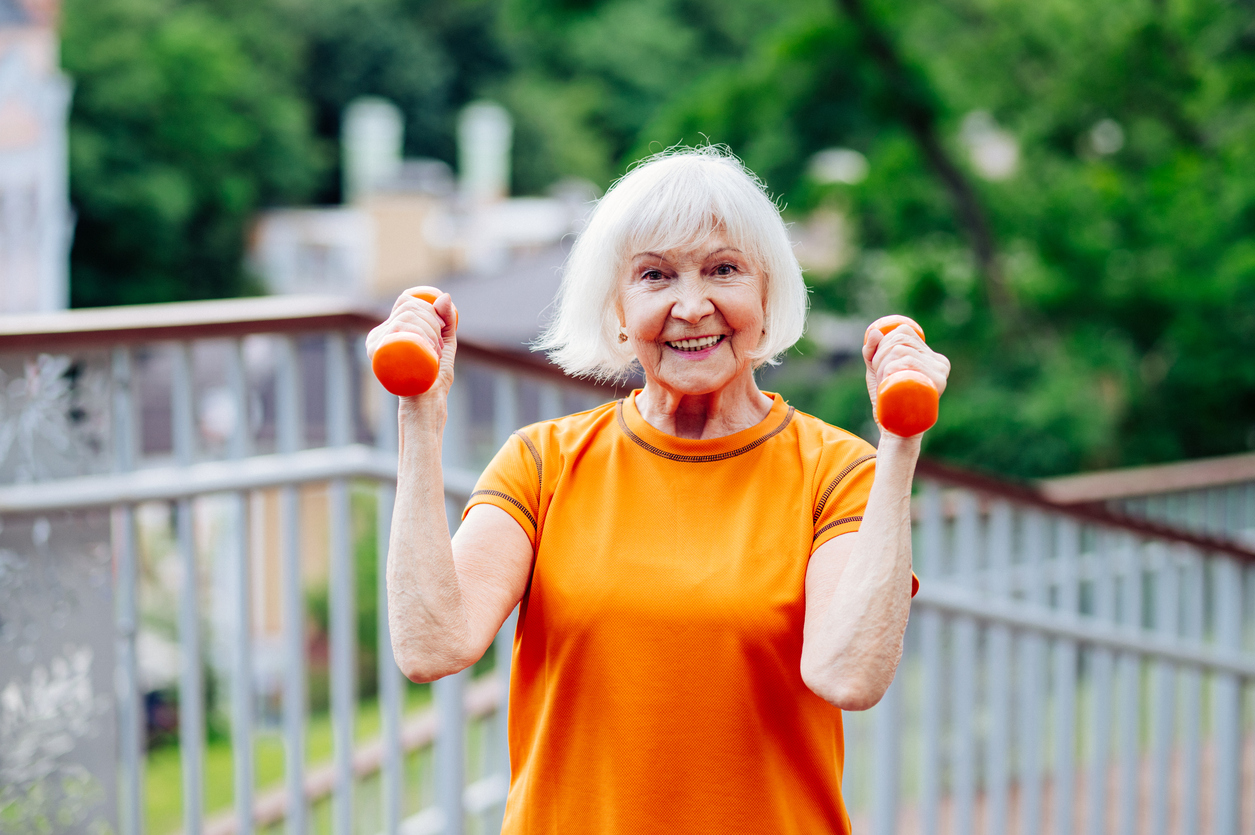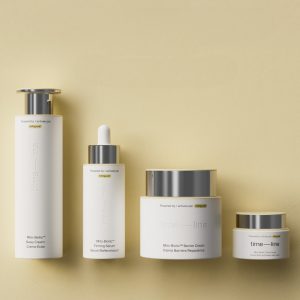As millions of Americans resolve to get into better shape for the new year, questions inevitably arise: What are the relative benefits of endurance vs. strength training? What’s the ideal ratio? And does it depend on the individual, their health assets and liabilities, even their preferences?
Spoiler alert: a blend of both types of exercise is optimal.
First, some definitions: Endurance exercise comprises activities that elevate heart rate and VO2 max—the ability to utilize airborne oxygen to propel muscle output. It’s aerobic.
Aerobic exercises include running, swimming, ice skating or roller-blading, skiing, boxing with a heavy bag, and cycling, but also dance and floor routines. Sports that promote endurance include tennis, pickle ball, basketball, soccer, hockey, and volleyball. Then there’s walking, but to make it truly aerobic, you have to pick up the pace to make yourself slightly out of breath, challenging your capacity. Or, if you golf, try carrying your clubs and walking the course.
By contrast, strength training has as its goal the augmentation of muscle volume and force. It’s anabolic.
There are free weights, machines, and floor exercises like pushups and wall squats that fit the bill; during the Covid gym lockdown, my home strength training routine consisted entirely of stretch bands, push-ups, planks, sit-ups, and small dumbbells.
Of course, there’s inevitable crossover: While cycling is predominantly an aerobic activity, propelling yourself up a steep incline can build leg muscle strength; conversely, a rapid “circuit” of weight-lifting, for example moving from one Nautilus or Universal station to another while sustaining an elevated heart rate, confers aerobic benefits. Yoga fits somewhere in between, with elements of endurance and strength, as do martial arts like Jiu Jitsu.
There’s also the issue of specialization. In the summer, my goal is to build aerobic capacity for races without bulking up, which would hamper running and cycling performance. My personal trainer emphasizes flexibility, with TRX and Pilates, and promises I go won’t go up a suit size.
In the winter, as temperatures dip, indoor exercise beckons, and I channel my inner Arnold as I hit the weights harder, allowing some weight gain that I can shed when I resume warm weather mileage.
We often talk about vitamins and supplements here on Intelligent Medicine, but the pervasive benefits of exercise far outstrip them. It’s the single most healthful thing you can do, possibly exceeding even the considerable disease-preventive effects of a healthy diet. Not that burning calories in the gym will give you license to eat indiscriminately—but it will mitigate occasional dietary indiscretions. One of my motivations for exercising is that I love to eat (the right foods mostly), and hate caloric-restriction diets.
In a comprehensive review, researchers enumerated the benefits of exercise for optimizing cardiovascular risk factors. Studies confirm it improves lipid profiles, lowers blood pressure, optimizes blood sugar and lowers inflammation. Even patients suffering from congestive heart failure enjoy improvements with gentle exercise routines. And, of course, patients with peripheral artery disease that causes hampering calf pain enjoy improvements in mobility with graded walking.
One of the most remarkable unanticipated dividends of exercise is brain health. There’s compelling evidence that exercise can stave off brain deterioration; it’s one of the few ways to amp up brain-derived neurotrophic factor (BDNF)—a sort of “Miracle-Gro®️” for brain cells. Boxing and stationary cycling are increasingly recognized as therapies for movement disorders like Parkinson’s.
A prime reason I exercise is to sustain mood and focus. There’s ample scientific literature to support its role in combatting depression and anxiety. I enjoy the sustained high I get after a vigorous run, bike ride, or swim.
Exercise can improve sleep quality, which is another key to overall health and longevity.
Oh, and I did I forget to mention immunity? Exercisers are significantly less likely to experience hospitalization or death after Covid; lifelong sustained physical activity is one of the few proven ways to stave off immunosenescence.
And bonus points for exercise’s ability to preserve sexual function.
There’s a notable bias toward aerobics among most exercisers, which is unfortunate because strength training confers distinct benefits and should be part of everyone’s routine. For one, most endurance exercises don’t target bone density—walking, running, swimming and cycling do little to forestall osteoporosis.
For another, heavy endurance training can be catabolic—sacrificing muscle volume to facilitate speed and sustained performance. Muscle reserves are a hedge against sarcopenia—the progressive loss of lean body mass that accompanies aging. By contrast, strength training is anabolic, enhancing muscle size. Preservation of lean body mass not only staves off frailty—it also stabilizes blood sugar.
Researchers summarize the benefits of strength training in an article entitled “The Health Benefits of Resistance Exercise: Beyond Hypertrophy and Big Weights”. They write:
“ . . . we propose that the health benefits of RT [resistance training] are underappreciated. There is evidence, established and emerging, that RT can, in many respects, elicit similar health benefits to AT [aerobic training]. When combined, AT and RT may yield ostensibly optimal health benefits versus performing either exercise exclusively. We discuss the health benefits of engaging in RT, including healthy aging, improved mobility, cognitive function, cancer survivorship, and metabolic health in persons with obesity and type 2 diabetes—all of which can influence morbidity and mortality.”
Moreover, they maintain that the benefits of RT can be obtained without hefting big weights:
“We recommend performing RT with light-to-moderate relative loads (≥30% but <70% of 1RM [one-rep maximum]) or using only body weight as resistance. Repetitions within a given set should be performed to the point that results in a high degree of effort or relatively close to momentary muscular failure. Such RT routines are just as effective as lifting relatively heavy loads (≥70% of 1RM) for eliciting health benefits.”
Nor should age be an impediment. The authors emphasize the advantages of RT for averting falls, which are a major cause of disability, culminating in loss of independence and premature death in seniors:
“The treatment costs associated with sarcopenia in the US health system are ~$19 billion per year in direct (e.g., hospitalization due to falling) and indirect (e.g., injury-related work disability) costs. Severe falls reduce the quality of life and exacerbate cognitive function declines, which reduce independence. Importantly, lifelong physical activity can help attenuate declines in muscle mass and strength. Unsurprisingly, RT improves mobility in the elderly and combining RT and AT (along with balance training) effectively reduces falls in care facilities.”
So when it comes to what type of exercise to undertake—the answer is unequivocally both, especially as you age.
CAVEAT: If you’re not used to exercising, or if you have an underlying medical condition, make sure you get a checkup from a medical professional before attempting heroic exploits. Heart problems don’t preclude exercise—in fact it’s beneficial, but certain precautions apply as you ramp up your capacity. Consider working with a certified trainer or physical therapist to address physical limitations or injuries and to design an individualized workout routine.






